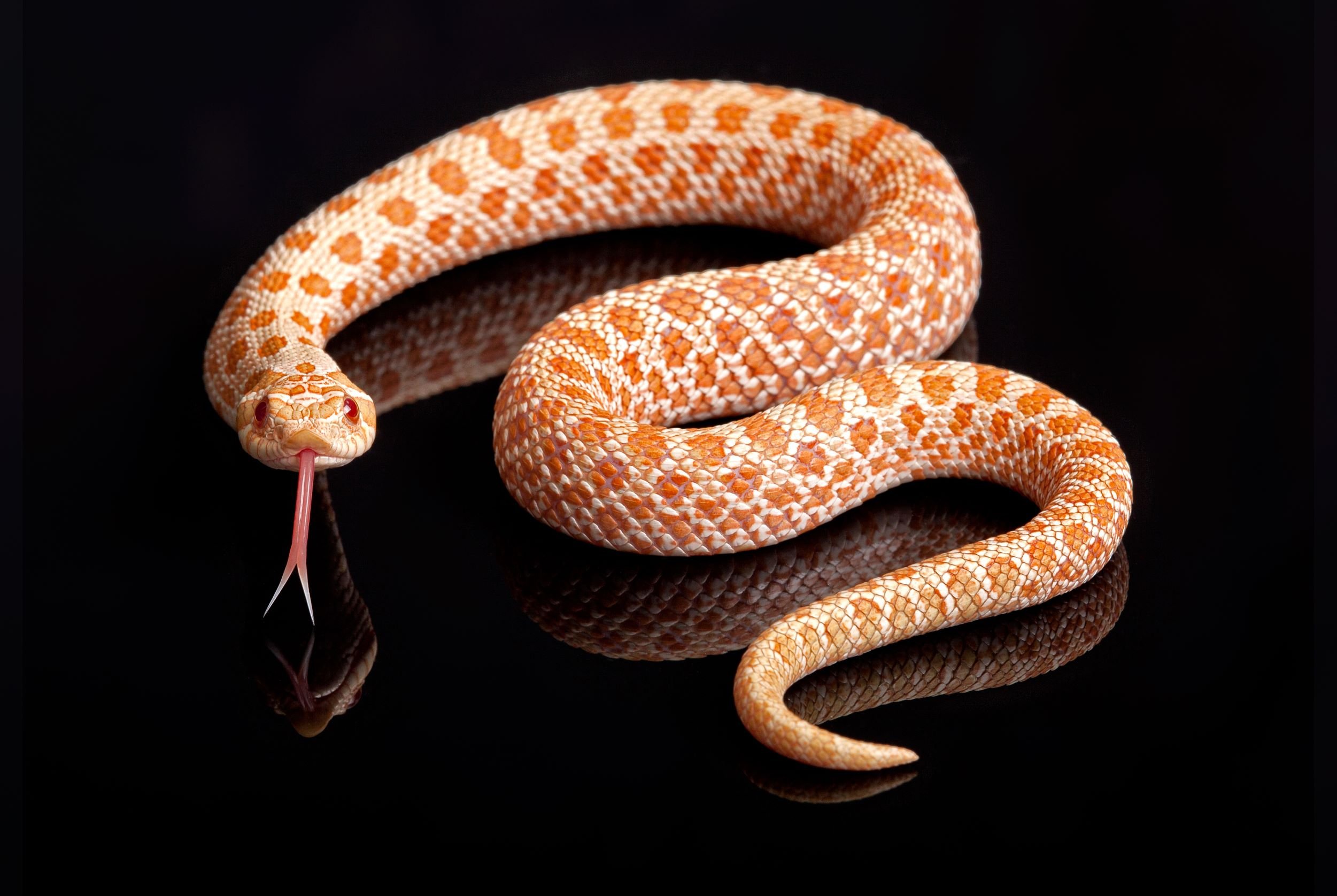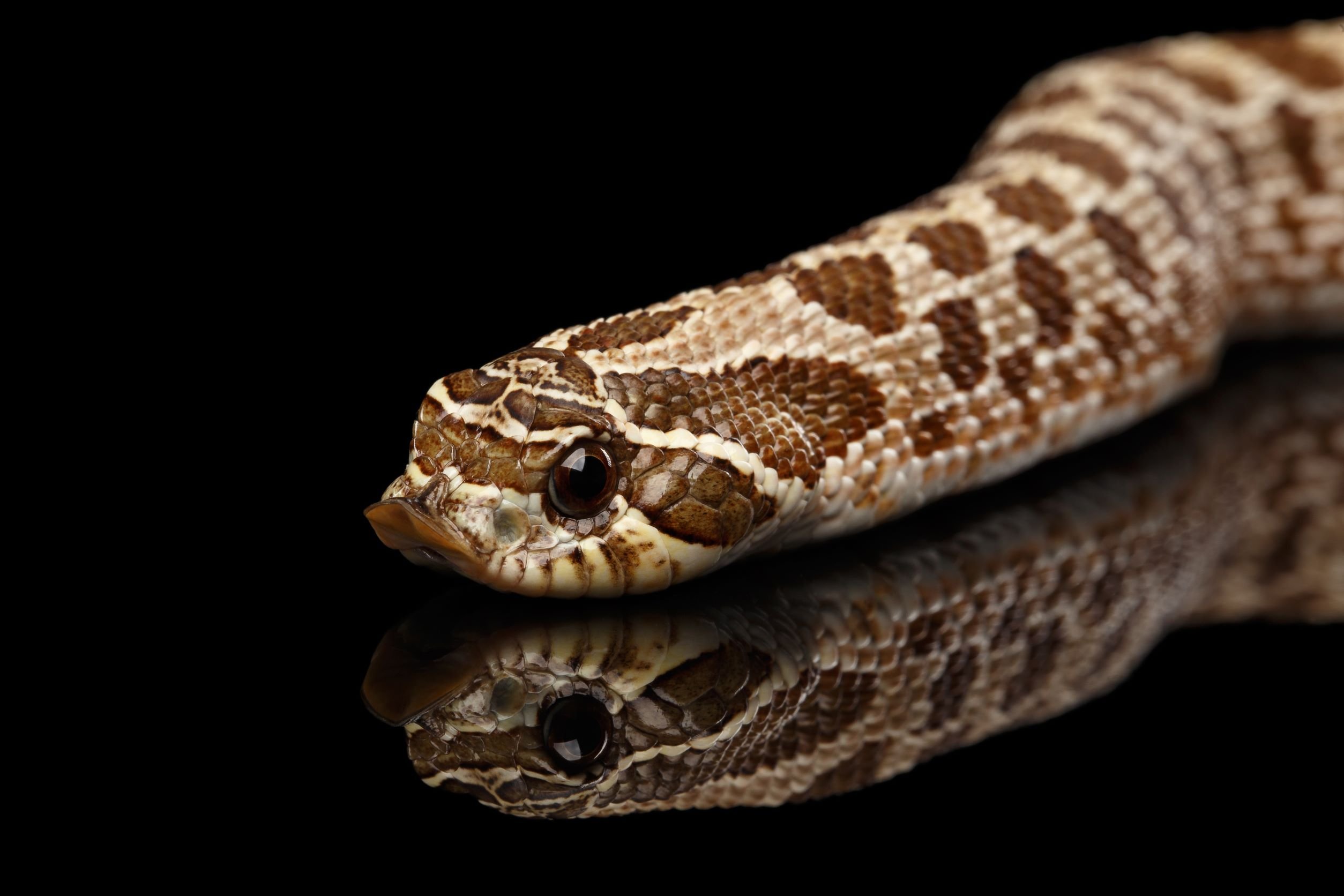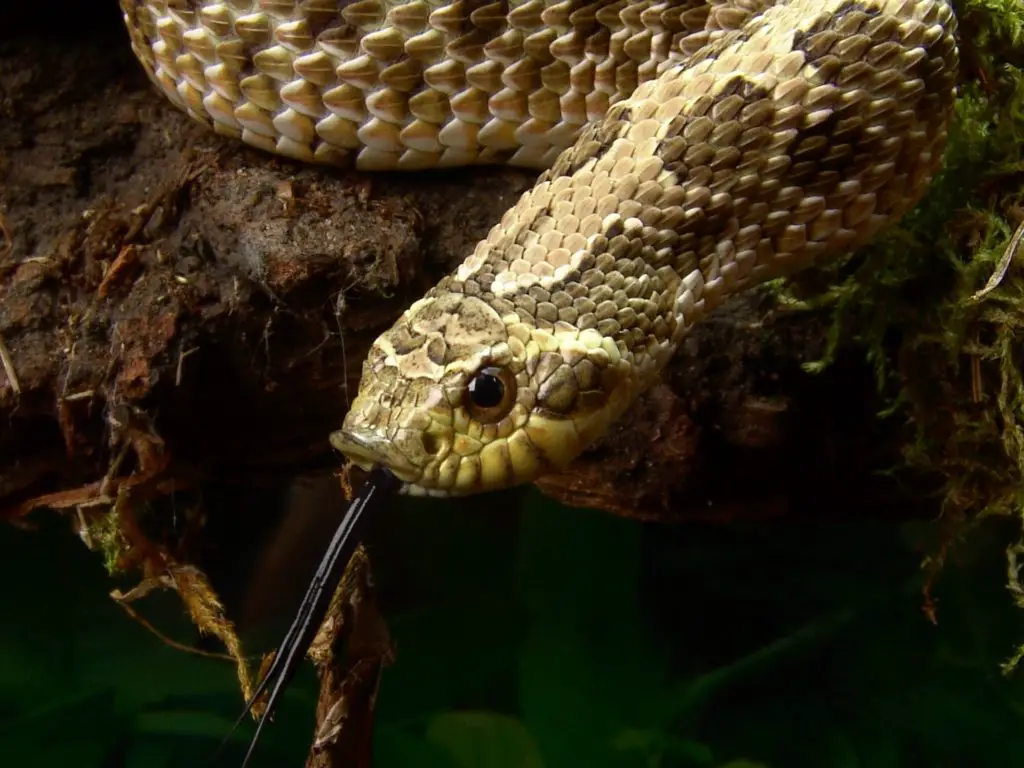Western Hognoses are one of my favourite snake species for a number of reasons. But why do Hognose Snakes make good pets? Let’s find out…
Last updated on February 1st, 2023 at 09:35 am
Why are Hognose Snakes good pets?
Hognose Snakes have a lot going for them when it comes to hardiness and general ease of care. But before we get into any details, let’s take a moment to discuss their appearance…
They have a unique combination of features that I think make them particularly attractive. For a start, they have the cool, blotchy dorsal pattern that is reminiscent of a Rattlesnake. Then, on their belly, they have mostly black scales with the occasional fleck of yellow or orange.
On their rostrum (snout), they have an upturned rostral scale, to which they owe the “Hognose” part of their name. Add to this the fact that they are unusually stocky for their length, and you get a truly unique-looking snake.
The Hognose Snake’s appearance isn’t its only quality, however. As you’re about to find out, their husbandry requirements, lifespan, availability, and temperament are all extremely favourable to captivity. Keep reading to learn more.
Are Hognose Snakes easy to take care of?
The husbandry requirements of this species are extremely simple. They only require a 24inch (60cm) or occasionally 36inch (90cm) long enclosure as adults and have simple dietary requirements. They also tend to only make a mess about once a week, which means it is extremely easy to maintain the hygiene of their enclosures.
If you get their temperature right (see the care sheet link at the bottom of the page), then everything else falls into place, and you get a healthy, happy snake.
In fact, there are only two things you need to get right with these snakes:
- Do not let them get too humid.
- Give the adults adequate substrate to burrow in.
These are the only two things that Hognose snakes are picky about!
How long do Hognose snakes live?
In the wild, Hognose Snakes encounter all kinds of dangers that can increase their mortality rate. Anything from opportunistic fungal infections, to extreme heat and predation by King Snakes or Milk Snakes (Lampropeltis spp.) can cut a Hognose Snake’s life short by a few years.
In captivity, by comparison, it’s the sweet life – no predators, parasites, or disease to worry about. Because of this, well-maintained Hognose Snakes can live up to 20 years. In general, your pet should live at least 12 to 15 years if provided with suitable temperatures, diet, and hygiene.
Finding Hognose Snakes for sale
Another aspect that makes Hognose Snakes a good pet is their widespread availability. There are numerous breeders that specialise in this species, across Europe and North America. In fact, the chances are there’s one in within driving distance from you.
This is important not just because it makes them easy to find and buy, but because it means that help is never far away if you have any issues. Therefore, I always recommend buying directly from breeders. Most of them are incredibly helpful and will be happy to give you advice on caring for your pet.
As always, I you should look for breeders online, and only use ones who sell through a platform that allows you to read feedback and reviews about them.

Are Hognose Snakes good pets for beginners?
Hognose Snakes are most definitely one of the best snakes for beginners. I say this purely because they are hardy, cheap to house and easy to maintain. The last thing you want as a first-time keeper is a temperamental captive, like a Dragon Snake, for example. A quick-to-die critter like that could put you off snakes completely if it were your first pet reptile!
Overall, Hognose Snakes are wonderful pets that are in fact a common choice for beginners. Their only real drawback is that they like to burrow. On occasion, you may go days without getting a good look at your pet. For me though, their awesome appearance when you do see them makes up for it.
Are Hognose Snakes venomous?
Technically yes, Hognose Snakes are venomous. What I would like to add, however, is that they aren’t venomous in the same way that Cobras or Rattlesnakes are. I wouldn’t be recommending them as beginner pets if they were!
Hognose Snakes have a set of enlarged – but still tiny – teeth at the back of their maxillae, which are the upper jaw bones. This means they are what is commonly referred to as a “rear-fanged” species, or, if you want to get technical, an Opisthoglyphous species. These teeth are used to chew prey and at the same time introduce a mildly toxic saliva or venom (how to classify it is still under debate) into the wound.
Conversely, most dangerously venomous snakes have hollow, or very deeply grooved fangs at the front of their mouth instead. Even the few dangerously venomous Opisthoglyphous snakes, like the Boomslang, have very enlarged teeth that are under the eye, rather than at the back like in Hognoses.
Fortunately, it would seem their venom isn’t very strong anyway. Most people report localised numbness, pain and swelling for a couple of days.
| Snake species: | Type of fangs: |
| Western Hognose | Rear fangs – Opisthoglyphous |
| Copperhead and other Viperids | Folding front fangs – Solenoglyphous |
| King Cobra and other Elapids | Fixed front fangs – Proteroglyphous |
| King Snakes and most Colubrids | Simple teeth – Aglyphous |
Do Hognose Snakes bite?
Hognose Snakes don’t bite intentionally. In fact, they have an elaborated threat display that includes head-butting, hissing, puffing up, and flattening their necks.
When this fails, they will resort to their second act, which consists of playing dead. They roll over, open their mouths, and let their tongue hang out. All because they simply don’t like to bite!
In captivity, you generally find that if you handle your snake gently a couple of times a week it will become incredibly tame. Some male Hognoses do get moody during the breeding season, but even then they wouldn’t bite. Overall, I consider them to be a very docile species.
Notwithstanding, a lot of keepers do get bitten when feeding them incorrectly. Like most reptiles, if they’re really hungry their aim gets pretty terrible. They might be striking out trying to get a frozen-thawed mouse and instead get a finger!
To avoid this, always use tongs or forceps to feed Hognose Snakes and make sure they are long enough. By doing this, you can completely avoid the possibility of being bitten – it really is that simple.

What do Hognose Snakes eat?
Hognose Snakes are often described as “toad specialists” in the wild. In fact, many people believe that they use their enlarged rear fangs to pop them. While yet others believe that this is incorrect and more of a stubborn myth. Personally, I’m not 100% sure…
What I do know is that in the wild Hognoses actually eat a wide variety of prey and can even change their preferences over the course of a season or their lifetime. This probably reflects changes in prey abundance and movement between habitats necessitated by weather.
In the wild Hognose Snakes are known to feed on:
- Lizard eggs
- Turtle eggs
- Frogs
- Toads
- Lizards
- Other snakes
- Rodents
In captivity, Hognose Snakes are best kept on a diet of frozen-thawed mice. These are widely available, cheap, and nutritionally complete. What you must make sure of, nonetheless, is that you get these mice from a reputable supplier.
Large pet store chains get their mice from large suppliers. This means an increase in price due to the intermediaries. It also means that you have no way of easily verifying how they were raised.
It’s best to find a smaller supplier who will deliver to you and who is happy to answer all your questions about the kind of diet the mice were raised on. For mice to be a complete food source for your snake, they must be raised on a complete diet!
How big do Hognose Snakes get?
The overall record of a Western Hognose Snake was 35 inches (89cm) in length. Notwithstanding, this is unusual. In general, males tend to reach 16 inches (40cm) and females between 22 and 24inches (55 and 60cm).
This size is great for a pet snake. It means they are easy to house and will never need larger food than mice for as long as they live.
The pros and cons of Hognose Snakes as pets
Pros:
- small size
- good lifespan
- hardy
- docile
- easy to source food
- cheap to maintain
Cons:
- like to burrow
- will not tolerate high humidity!
Conclusion
Hognose Snakes make great pets. They’re easy to maintain and have minimal food and housing requirements. You just need to make sure you get their temperature and humidity correct and give them adequate substrate depth to burrow.
What I will say, however, is that these snakes will spend a lot of time hiding. If you want a pet you can observe a lot, it may be a good idea to choose something more active, like a Bearded Dragon, for example.

